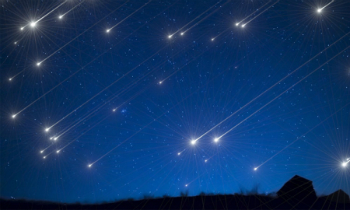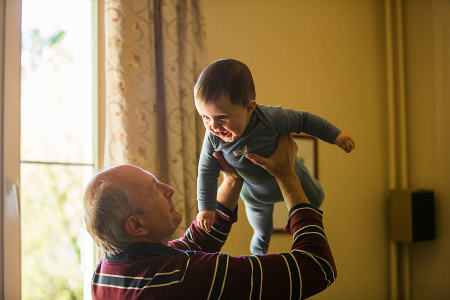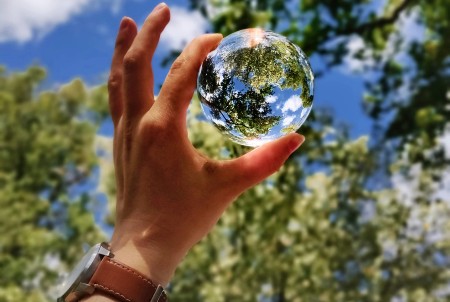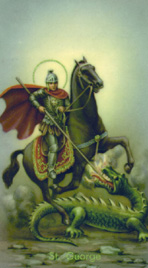We ask you, humbly: don't scroll away.
Hi readers, it seems you use Catholic Online a lot; that's great! It's a little awkward to ask, but we need your help. If you have already donated, we sincerely thank you. We're not salespeople, but we depend on donations averaging $14.76 and fewer than 1% of readers give. If you donate just $5.00, the price of your coffee, Catholic Online School could keep thriving. Thank you.Help Now >
How to view a Catholic meteor shower this month
FREE Catholic Classes
The Perseid meteor shower will peak between the nights of August 11 and 12 this year (2017), and will make a nice consolation for those who cannot make their way to see the total eclipse on August 21. The Perseid shower is consistent, and one of the most prolific showers with up to 80 meteors per hour on average. The meteor shower is associated with St. Lawrence, who was martyred in 258 A.D. by the Romans.
We ask you, humbly: don't scroll away.
Hi readers, it seems you use Catholic Online a lot; that's great! It's a little awkward to ask, but we need your help. If you have already donated, we sincerely thank you. We're not salespeople, but we depend on donations averaging $14.76 and fewer than 1% of readers give. If you donate just $5.00, the price of your coffee, Catholic Online School could keep thriving. Thank you.Help Now >

The tears of St. Lawrence are associated with a Catholic martyr from the third century.
Highlights
Catholic Online (https://www.catholic.org)
7/31/2017 (6 years ago)
Published in Green
Keywords: Persieds, Persied, meteor shower, Catholic, St. Lawrence, comet Swift--Tuttle, how, why
LOS ANGELES, CA (California Network) -- The Perseid meteor shower is returning and will peak between the nights of August 11 and 12. The Moon will rise around 11 p.m. and will be three-quarters full on both nights. Its brightness will drown out some of the meteors, but experts believe skywatchers who are up between midnight and dawn will still see about 40 to 50 meteors per hour.
The shower is caused by comet Swift-Tuttle, which leaves a wake of rocky debris behind it as it sweeps around the Sun every 133 years. Each August, Earth passes near these rocky streams of debris. As these debris are swept up by Earth, we on the ground see a meteor shower. The meteors are moving at speeds much faster than a bullet, and are often no larger than a pea or a baseball. The friction and pressure of striking the upper atmosphere causes them to heat up and glow until they burn up, leaving only dust behind in the upper atmosphere.
Swift-Tuttle poses no threat to Earth, at least not for the next several thousand years. The comet passed by Earth in 1992, and will not return until 2126.
Anyone can see the Perseids, but depending on the hour you are outside, and how dark the sky is, your rates will be dramatically affected.
If you go outside after sunset on the evening of August 11, you will see some meteors, but probably only a few per hour. The closer to midnight, the more you will see. Perhaps a couple dozen will be visible before 11 p.m. however, the rising of the moon around that time will make it impossible to see the fainter meteors. After moonrise and midnight, the rate of meteors will increase to about 40 to 50 per hour, peaking just before morning twilight.
The process will repeat itself the following night, August 12, but the numbers will decrease on each night after that as Earth moves away from the cosmic stream of debris.
It is important to find a location far away from lights to see the most meteors. People living in urban areas will only see the brightest shooting stars, which may come to a few per hour at best.
Viewing from the wilderness or a rural area is best, if you can make you way to such a spot. If possible, people are encouraged to turn off lights, especially outdoor lights. Looking at your phone will also make it difficult to see meteors because your eyes will require several minutes to readjust back to the dark.
There is no place to look for the meteors, as they will appear at any point in the sky. The best advice is to situate yourself comfortably, possibly reclining in a chair with support for your neck. You want to see as much of the sky as possible. A blanket or a sleeping bag is a good idea depending on how cold the night can be where you are. Snacks and hot cocoa are optional.
The Perseids are often called a "Catholic meteor shower" because of their association with Saint Lawrence. Lawrence was a deacon of the early Church in Rome, and he was condemned to die for his faith by Emperor Valerian in the year 258. The manner of his death was particularly gruesome, as he was roasted alive over a fire. According to legend, he told his tormentors, "Turn me over, this side is done." The shooting stars on August are often called "St. Lawrence's Tears, due to their close association with St. Lawrence's feast day on August 10.
Subscribe Now - Catholic Online YouTube
---
'Help Give every Student and Teacher FREE resources for a world-class Moral Catholic Education'
Copyright 2021 - Distributed by Catholic Online
Join the Movement
When you sign up below, you don't just join an email list - you're joining an entire movement for Free world class Catholic education.
-

-
Mysteries of the Rosary
-
St. Faustina Kowalska
-
Litany of the Blessed Virgin Mary
-
Saint of the Day for Wednesday, Oct 4th, 2023
-
Popular Saints
-
St. Francis of Assisi
-
Bible
-
Female / Women Saints
-
7 Morning Prayers you need to get your day started with God
-
Litany of the Blessed Virgin Mary
Pope Francis to Host Grandparents and Grandchildren at Vatican
-

Simple Steps to Celebrate Earth Day the Catholic Way
-

US Catholic Bishops Criticize Biden Admin's Rule Mandating Employers Support Abortion
-
THE HEART OF SUPERNATURAL TRUTH: How can we know it
-
5 Simple Children's Prayers Your Kid Will Love To Learn
Daily Catholic
 Daily Readings for Tuesday, April 23, 2024
Daily Readings for Tuesday, April 23, 2024 St. George: Saint of the Day for Tuesday, April 23, 2024
St. George: Saint of the Day for Tuesday, April 23, 2024 Prayer After A Surgery: Prayer of the Day for Tuesday, April 23, 2024
Prayer After A Surgery: Prayer of the Day for Tuesday, April 23, 2024- Daily Readings for Monday, April 22, 2024
- St. Abdiesus: Saint of the Day for Monday, April 22, 2024
- Prayer for Eternal life with God: Prayer of the Day for Monday, April 22, 2024
![]()
Copyright 2024 Catholic Online. All materials contained on this site, whether written, audible or visual are the exclusive property of Catholic Online and are protected under U.S. and International copyright laws, © Copyright 2024 Catholic Online. Any unauthorized use, without prior written consent of Catholic Online is strictly forbidden and prohibited.
Catholic Online is a Project of Your Catholic Voice Foundation, a Not-for-Profit Corporation. Your Catholic Voice Foundation has been granted a recognition of tax exemption under Section 501(c)(3) of the Internal Revenue Code. Federal Tax Identification Number: 81-0596847. Your gift is tax-deductible as allowed by law.








 Daily Readings for Tuesday, April 23, 2024
Daily Readings for Tuesday, April 23, 2024 St. George: Saint of the Day for Tuesday, April 23, 2024
St. George: Saint of the Day for Tuesday, April 23, 2024 Prayer After A Surgery: Prayer of the Day for Tuesday, April 23, 2024
Prayer After A Surgery: Prayer of the Day for Tuesday, April 23, 2024

